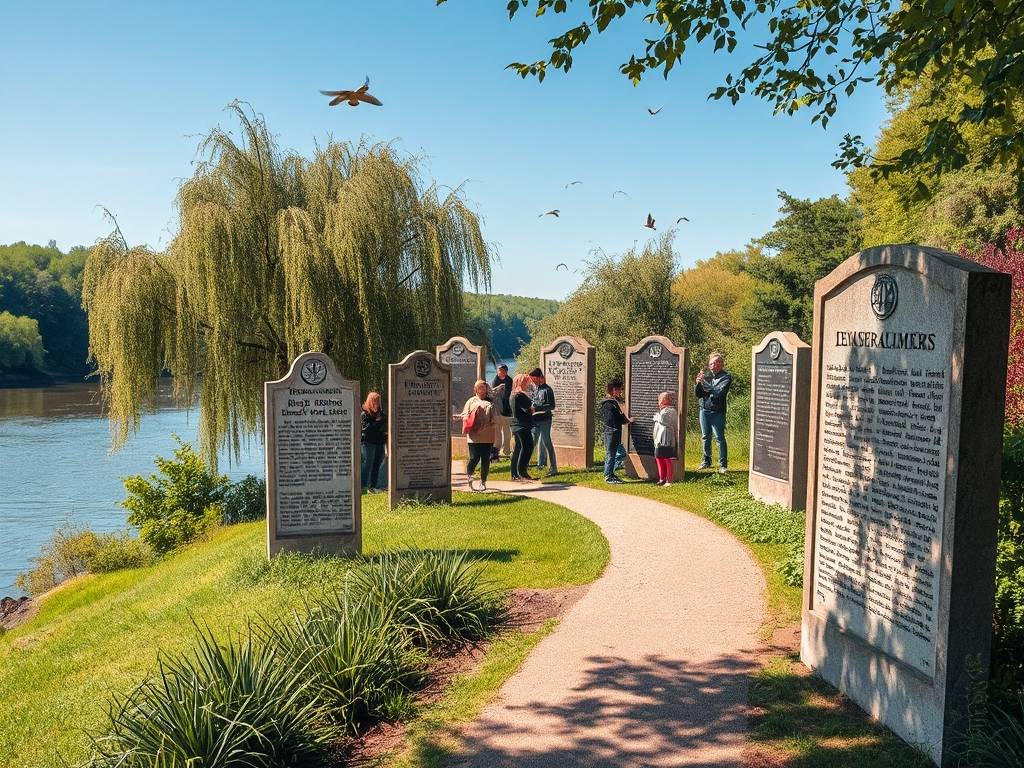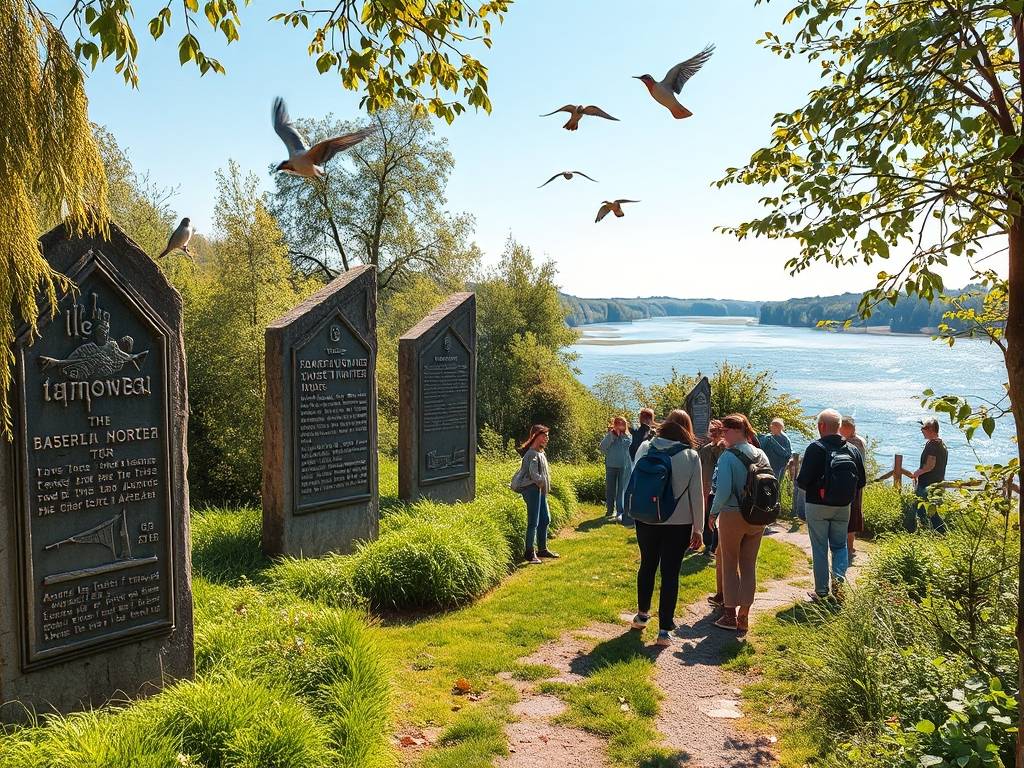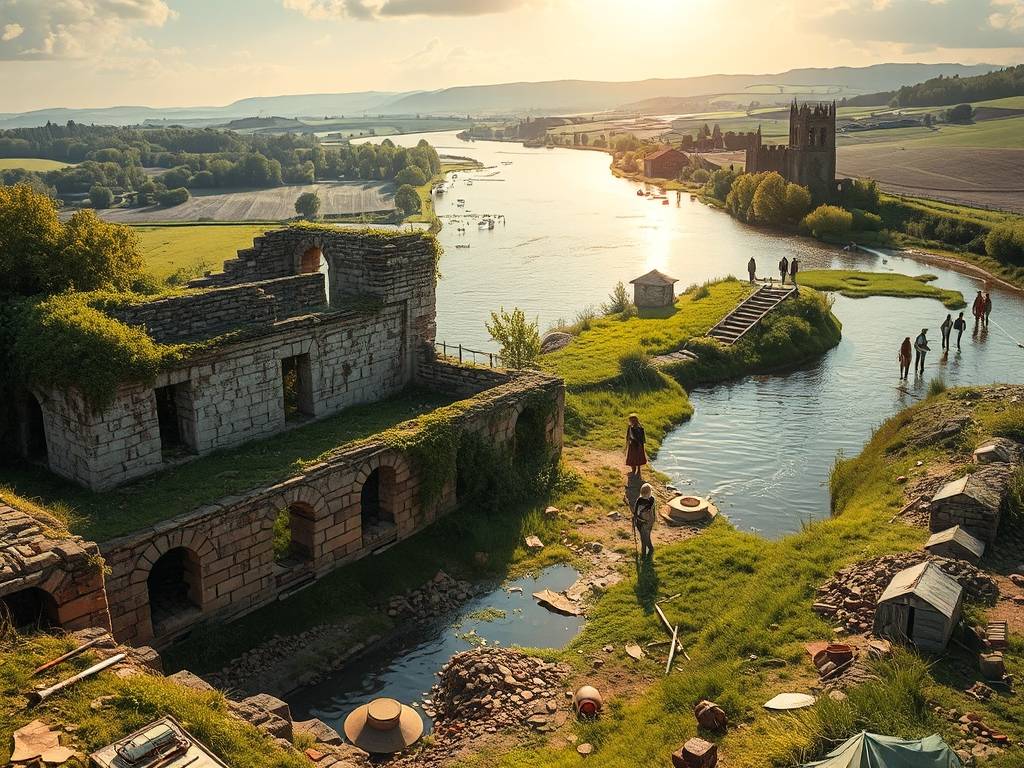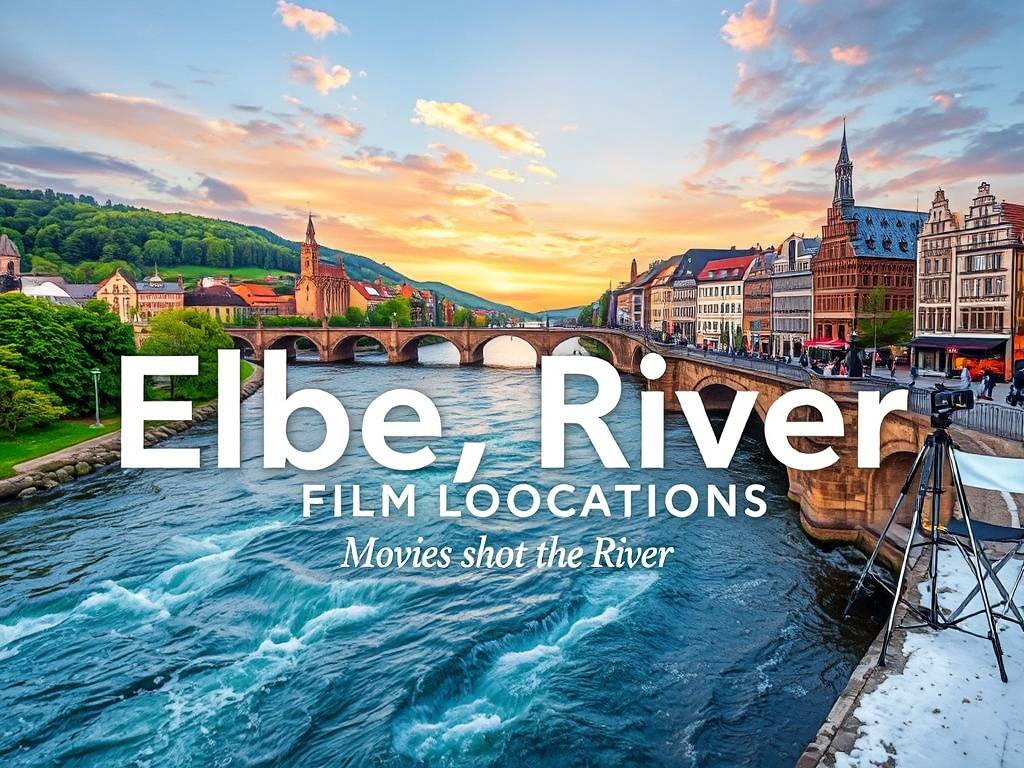Global Travel Information
Elbe River Historical Markers: Learn About Local History
Tracing Time Along the Elbe: Your Guide to the Stories Carved in Stone and Steel
There's a special kind of magic that happens when you stand in a place where history unfolded. It’s a feeling that transcends textbooks and documentaries, a quiet hum of connection to the people and events that shaped the world you're walking through. For anyone exploring the enchanting landscapes of the Elbe River, from the vibrant heart of Dresden to the maritime bustle of Hamburg, this magic is waiting to be discovered. It’s not hidden in grand museums alone, but etched into the very fabric of the riverbanks, on weathered stones, and on informative plaques known as Elbe River historical markers. These markers are your direct portal to the past, and this guide is your key to unlocking their stories.
Think of the Elbe not just as a body of water, but as a liquid timeline. For centuries, it has been a life-giver, a trade route, a border, and a witness to both triumphant and tragic chapters of European history. The historical markers along the Elbe River serve as chapter headings in this vast, flowing narrative. They are placed with purpose, ensuring that the local history of the Elbe River region is not forgotten but is instead presented to every curious traveler and resident.

So, how can you make the most of these historical signposts? Let's start with the practical side of finding and interpreting Elbe River historical plaques. You'll find them in a variety of forms. Some are classic, freestanding stone monuments with inscriptions in German, often located in town squares or at the sites of old city gates. Others are more modern, metal informational boards equipped with maps, photographs, and multilingual text. These are frequently found at key viewpoints, castle entrances, or along well-trodden paths like the Elbe Cycle Path. When you approach one, take a moment. Don't just read the words; look at the dates, the names, and the style. Is it commemorating a birth, a battle, or a building that was lost? This initial observation is the first step in understanding the significance of Elbe River landmarks.
To truly appreciate the depth of these markers, we must journey through some of the pivotal eras they represent. Let's explore a few key themes you will encounter.

Medieval Foundations and Hanseatic Power
As you wander through towns like Magdeburg or Wittenberg, you'll encounter markers pointing to a time of emerging power and faith. Look for references to the "Deutscher Orden" (Teutonic Order) or the rise of influential bishoprics. These markers often highlight the architectural marvels of the time. But the true economic powerhouse of the later medieval period was the Hanseatic League, and the Elbe was its bloodstream. In Hamburg, you can almost hear the echoes of haggling merchants and the clatter of cargo. Historical markers detailing the Hanseatic League's influence on the Elbe explain how goods like timber, wool, and herring flowed from the North Sea deep into the heart of Europe, making cities like Hamburg immensely wealthy and powerful. These plaques don't just talk about trade; they tell the story of urban development, legal codes, and the cultural exchange that shaped Northern Germany's identity.
The Crossroads of Reformation and Enlightenment
No historical journey along the Elbe is complete without a stop in Dresden and Wittenberg. In Wittenberg, a single door—the Schlosskirche door—became the epicenter of a religious earthquake. The historical markers at Wittenberg Castle Church don't merely state that Martin Luther nailed his 95 Theses here; they contextualize the act, explaining the profound societal upheaval that followed and how the Reformation spread along the river routes, changing Europe forever.
Downstream, Dresden flourished as a jewel of the Baroque age. Markers here speak of art, music, and astounding architecture under Augustus the Strong. They tell of the creation of the Zwinger Palace and the Frauenkirche. This era represents a different kind of power—not just military or economic, but cultural. The river facilitated the movement of artists, thinkers, and the materials needed to build these magnificent structures, making Dresden a beacon of the Enlightenment.
The River of Conflict and Division: The 20th Century
The 20th century cast a long, dark shadow over the Elbe. The river became a front line in two world wars. Elbe River markers commemorating World War II history are somber yet essential. In Dresden, plaques indicate the outlines of neighborhoods utterly destroyed by the firebombing in February 1945, serving as a powerful memorial to the lives lost and the city's subsequent "Phoenix from the ashes" rebirth.
Perhaps the most poignant markers are those related to the Cold War. The Elbe famously became part of the Iron Curtain, dividing East from West Germany. At locations like Torgau, where American and Soviet troops famously met in 1945, markers celebrate a fleeting moment of unity. Yet, elsewhere, you'll find traces of a grimmer reality. Remnants of watchtowers, border forts, and memorials to those who died trying to cross to the West tell a story of a nation torn in two. Exploring Cold War history through Elbe River markers is a moving experience that makes the joy of Germany's reunification in 1990 all the more powerful. It’s a stark reminder of how a river that once connected people could become a nearly insurmountable barrier.
Nature's Narrative: The River and Its Landscape
The history of the Elbe is not solely human. The river itself has a story, one of shaping the land and being shaped by it. You'll find markers explaining the history of the Elbe River valley landscape, detailing the formation of the stunning Elbe Sandstone Mountains, a paradise for hikers and climbers. Others explain the centuries-long struggle to manage the river's flow. The "Lauenburger ElbMarsch" region, for instance, is dotted with markers about dike construction and land reclamation, showcasing the human ingenuity required to live alongside this powerful force of nature. Furthermore, in the Lutherstadt Wittenberg area, you can learn about the UNESCO-recognided Biosphere Reserve, where markers discuss the ongoing efforts in Elbe River valley environmental history and conservation, balancing ecological health with cultural heritage.
To turn your exploration into a truly enriching adventure, here are a few final tips. Consider focusing your trip on a specific theme, such as "The Hanseatic Trail" or "From Reformation to Reunification." This gives your journey a compelling narrative arc. Use a detailed map to pinpoint historical markers along the Elbe River bike path, as this is one of the most rewarding ways to experience the region at your own pace. Don't be afraid to use a translation app on your phone to fully understand German-only plaques—it’s worth the extra few seconds. And finally, talk to locals. Often, the stories behind the markers are kept alive in the memories of the people who live there, adding a personal dimension you won't find anywhere else.
The Elbe River historical markers are more than just informational signs; they are invitations to pause, reflect, and connect. They challenge us to see beyond the beautiful scenery and perceive the deep layers of human joy, struggle, creativity, and resilience that have defined this corner of the world. So, on your next visit, let the river guide you, and let these silent storytellers reveal the profound and captivating local history of the Elbe River region. Your journey through time awaits.
相关文章
- Elbe River Street Food: Quick Bites to Try
- Elbe River Theater Performances: Outdoor Shows in Summer
- Elbe River Concert Venues: Live Music by the Water
- Elbe River Film Locations: Movies Shot Along the River
- Elbe River Archaeological Sites: Ancient Finds Near the Water
- Elbe River Botanical Gardens: Flowers & Plants Along the Banks
- Elbe River Zoos & Aquariums: Family Fun Near the River
- Elbe River Amusement Parks: Rides with River Views
- Elbe River Camping Spots: Pitch a Tent by the Water
- Elbe River Glamping Sites: Luxury Camping Along the Banks
发表评论
评论列表
- 这篇文章还没有收到评论,赶紧来抢沙发吧~


